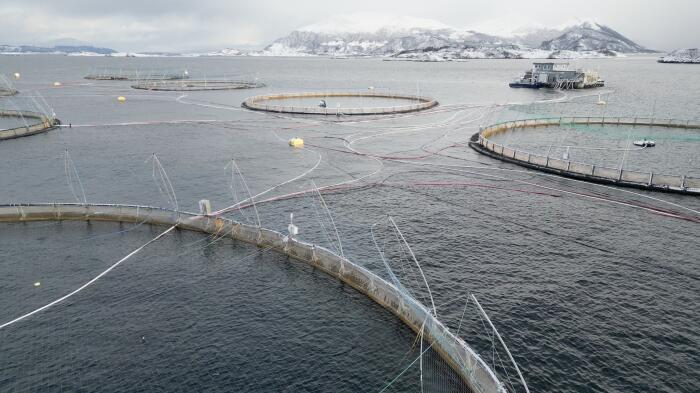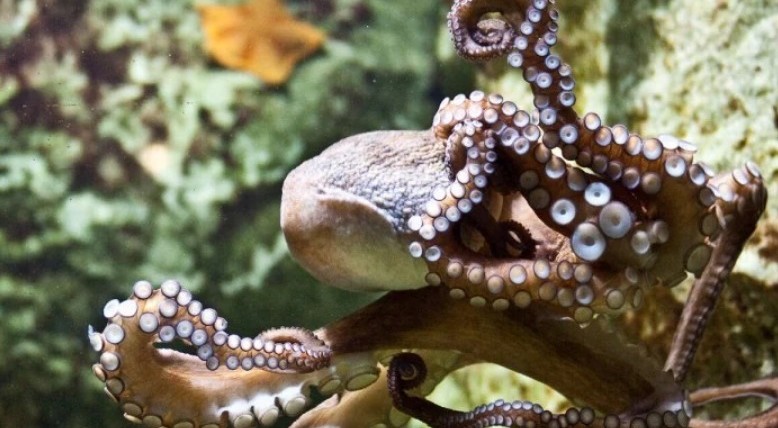In 2023, 62.8 million fish died on farms along the Norwegian coast, as a result of bacterial infections and injuries often caused by lice treatments.
The year 2023 was exceptional for Norwegian aquaculture. Seafood exports have never brought in so much money for the Scandinavian kingdom: 172 billion crowns in total (15 billion euros), an increase of 13% compared to 2022, when a record had already been reached. been reached. Farmed salmon, of which Norway is the largest producer in the world, alone generated 122.5 billion crowns. The Nordic country exported 1.2 million tonnes, which represents sixteen million meals every day around the world.
But behind these figures lies a very bleak reality: according to the Norwegian Veterinary Institute, 62.8 million salmon died on fish farms during the year, a mortality rate of 16.7% (compared to 16.1% in 2022), the highest ever recorded. In some areas it reached 25%. Land-based hatcheries were not spared: 37.7 million fry died there – again, a record.
“This is a trend that we have been observing for five or six years,” explains Edgar Brun, director of the fish health department at the Veterinary Institute. The increase from one year to the next is not huge, but the evolution is clear enough to show that, even if measures could be taken, they are not enough. »
Mechanical treatment against lice
In its annual report on fish health, published on March 12, the Veterinary Institute examines the causes of salmon mortality. If in 20% of cases they are unknown, two main factors stand out: in 2023, 38% of deaths were caused by infectious diseases, while 33% were the consequence of injuries or trauma, most often caused during treatments against lice, regularly undergone by fish to destroy this parasite which abounds in intensive farms.
Salmon, a large-scale industry and vein for Norway The country’s regulations require farmers not to exceed 0.5 inches per fish. Several forms of treatment exist. Originally, the operators used medicines. But in recent years, lice have become resistant to it. The only solution: mechanical treatment. The fish is taken out of the farm, to be rinsed – and sometimes brushed – in water at around 28°C, before being released. And this, several times during his life.
The consequences can be dramatic, according to Edgar Brun: “The treatments stress the fish. They can also cause physical injury, during transport, as well as during rinsing, which damages the mucus covering their skin. It’s a vicious circle: when fish are stressed, they are also more likely to develop infections. » Change the legislation Intensive farming does not make things easy: around 450 million salmon are waiting to mature in cages scattered along the Norwegian coast. However, the more fish there are, the more the parasite thrives there. This phenomenon does not, however, seem to be inevitable: “According to our calculations, it should be possible to go below 10%,” says Mr. Brun. Some breeders are already succeeding, because their farms are located in favorable areas, with lower density, but also because they are better than others. »
In recent months, the industry has been facing unprecedented pressure in Norway, following several scandals. Thus in June, the SalMar group, number two in the world in salmon farming, was sentenced to a record fine of 1.7 million crowns, after an unannounced visit by inspectors from the Norwegian Food Safety Agency, in one of his farms, in Hjortoya, near Rorvik, where they discovered injured and dying fish. Public opinion is changing: according to a survey, published on March 21 by the public channel NRK, 37% of those questioned say they now have a negative opinion towards farmed salmon. Read also: Norway wants to tax salmon producers This development is not good news for the industry, whose profits are also at stake, because “the costs linked to the health and well-being of the fish are in question. becoming very high,” notes Edgar Brun. Mortality is not the only problem.
The proportion of high quality salmon delivered to slaughterhouses continues to decline. On March 6, SalMar announced the creation of a research laboratory on salmon welfare, the “Salmon Living Lab”, financed to the tune of 500 million crowns, in partnership with the American group Cargill, producer of food for fish. For its part, the Labor-led government is preparing a white paper on animal welfare, which should lead to a change in legislation. For the Greens, we must move faster: the environmentalist group, which has three deputies, has tabled a bill aimed in particular at limiting the production permits of breeders whose farms display mortality rates above 5%. Anne-Françoise Hivert (Malmö (Sweden), regional correspondent).




